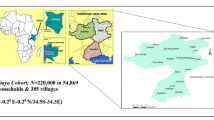Abstract
In India, child malnutrition is prevalent, especially among the poor and vulnerable. It is mostly the result of high levels of exposure to infection and inappropriate infant and young child feeding and caring practices, and it sets in mostly during the first 2 to 3y of life. Therefore, the present study was done to assess the role of inter personal communication in influencing the infant and young child feeding practices of mothers in an urban slum of Delhi. Case study method was used to document the practices of mothers residing in an urban slum of Delhi, for infant and young child feeding. In most of the cases, it was observed that full potential of health system contact of beneficiary was not utilized for providing appropriate Inter Personal Communication (IPC). It was not able to make proper use of the opportunity to create awareness on nutrition issues, change norms and practices, and persuade mothers/families to make positive behavior change. IPC was not effective, as it was not personalized as per patient’s educational level and ability to understand technical information. Though IPC component was better for immunization services, it was weakest for nutrition in case of children younger than 2y. ICDS program implementation lays more emphasis on food supplementation than on nutrition and health education interventions. Thus, role of IPC should be increased manifold to inculcate appropriate feeding practices among mothers to improve nutrition in these children. Health and nutrition messages need to reach every household repeatedly through multiple complementary sources to bring desired behavior-change in the community.
Similar content being viewed by others
References
Gragnolati M, Shekar M, Gupta MD, Bredenkamp C, Lee Y. India’s undernourished children: a call for reform and action, World Bank; 2005.
Levels & Trends in Child Mortality Report 2011 Estimates Developed by the UN Inter-agency Group for Child Mortality Estimation. United Nations Children’s Fund; 2011.
Physical status: The Use and Interpretation of Anthropometry. Report of a WHO Expert Committee. WHO Technical Report series 854. Geneva: World Health Organization; 1995.
Calder PC, Jackson AA. Under nutrition, infection and immune function. Nut Res Rev. 2000;13:3–29.
National guidelines on infant and young child feeding. Ministry of Women and Child Development (Food and Nutrition Board), Government of India; 2006.
Haines A, Sanders D, Lehmann U, et al. Achieving child survival goals: Potential contribution of community health workers. Lancet. 2007;369:2121–31.
National Rural Health Mission 2005–2012: Mission Document. Ministry of Health and Family Welfare, Government of India; 2005.
Improving Performance of Community-Level Health and Nutrition Functionaries: A Review of Evidence in India; 2008. http://www.intrahealth.org/~intrahea/files/media/maternal-neonatal-and-childrens-healthfamily-planning/ER_Brief_PI%206.pdf. Accessed on 02 April 2012.
Black RE, Allen LH, Bhutta ZA, et al; Maternal and Child Undernutrition Study Group. Maternal and child undernutrition: global and regional exposures and health consequences. Lancet. 2008;371:243–60.
HUNGaMA: fighting Hunger and malnutrition. The HUNGaMA Survey Report – 2011. http://www.hungamaforchange.org. Accessed on 18 April 2012.
Otoo GE, Lartey AA, Pérez-Escamilla R. Perceived incentives and barriers to exclusive breastfeeding among periurban ghanaian women. J Hum Lact. 2009;25:34–41.
Bhutta ZA, Ahmed T, Black RE, et al; Maternal and Child Undernutrition Study Group . What works? Interventions for maternal and child undernutrition and survival. Lancet. 2008;371:417–40.
Allen LH, Gillespie SR. What works? A review of the efficacy and effectiveness of nutrition interventions. ACC/SCN Nutrition Policy Paper 19; Asian Development Bank (ADB) Nutrition and Development Series 5. Geneva and Manila: United Nations Administrative Committee on Coordination/Sub-Committee on Nutrition, and the Asian Development Bank, 2001.
Behaviour Change Communication (BCC) Strategy for NRHM in Uttar Pradesh, Department of Health & Family Welfare, Government of Uttar Pradesh; 2008.
Sinha K. Breastfeeding can save 22% of newborns Times of India, 21 March, 2012.
Rao M, Rao KD, Kumar AK, Chatterjee M, Sundararaman T. Human resources for health in India. Lancet. 2011;377:587–98.
Concurrent evaluation of Integrated Child Development Services. New Delhi: National Council of Applied Economic Research; 2001.
Quinn VJ, Guyon AB, Schubert JW, Stone-Jiménez M, Hainsworth MD, Martin LH. Improving breastfeeding practices on a broad scale at the community level: success stories from Africa and Latin America. J Hum Lact. 2005;21:345–54.
Conflict of Interest
None.
Role of Funding Source
None.
Author information
Authors and Affiliations
Corresponding author
Rights and permissions
About this article
Cite this article
Shahrawat, R., Joon, V. Role of Inter Personal Communication in Infant and Young Child Feeding Practices in an Urban Slum: An Overview Based on Case Studies. Indian J Pediatr 80, 1041–1046 (2013). https://doi.org/10.1007/s12098-012-0894-6
Received:
Accepted:
Published:
Issue Date:
DOI: https://doi.org/10.1007/s12098-012-0894-6




